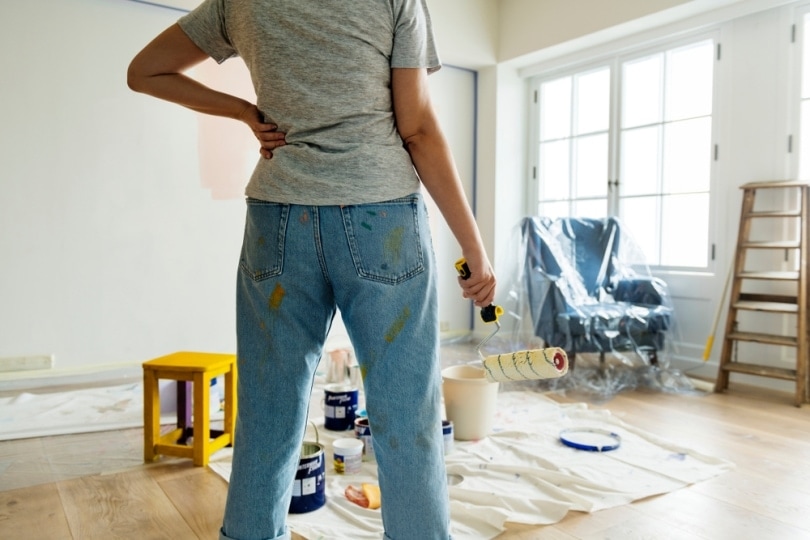Eggshell vs. Satin Paint: What’s the Difference?
-
Pete Ortiz
- Last updated:

It is already a difficult endeavor to choose a color for an area or item you want to paint, and the last thing you want to worry about is the sheen of the paint. Sheen is defined as the glossiness of the paint finish. What makes a paint sheen different is how much light it will reflect or absorb.
Satin and eggshell are both popular indoor sheens with distinct differences. This article will help you distinguish between eggshell and satin paint so you can pick the one that will make your finished product look brilliant, as well as be durable enough to last for many years.
Eggshell Finish

If you want a soft, low-luster sheen, eggshell finish is a good choice. The name says it all: It resembles the shell of an egg, with a subtle and warm sheen that will reflect and bounce light around a room. It is good at hiding imperfections, allowing them to blend into the surface more effectively (especially when extra coats of paint are added).
The downside of this finish is that it is not as durable for high-wear areas such as bathrooms and kids’ rooms. An eggshell finish works best in living rooms and dining rooms, since it won’t pick up dust easily. It will also resist stains and scuffs more readily.
This finish is typically cheaper and fast-drying and won’t yellow from the sunlight. Eggshell finishes are one of the most widely used when you don’t need the extra plasticity from a high-gloss finish. They can be cleaned but will require more elbow grease since they have a rougher surface.
- Subtle and warm
- Hides imperfections
- Resists stains and scuffs
- Fast drying
- Cheaper
- Resists yellowing
- Ideal for low-traffic areas
- Not as durable
- Harder to clean
Satin Finish

For a more reflective look, also described as a sort of glow, satin is a nice choice to add depth to a space or enliven a paint color. Satin sheen is the most common finish, as it resists mildew and fading while providing an elegant appearance.
It is ideal for high-traffic areas since it is more durable. Satin sheen is a good choice for kid’s rooms, bathrooms, and trim. Though it holds up well to scuffs and bumps, it will show imperfections a little more easily compared to eggshell finish, so prep your surfaces by making them smooth and free of blemishes before painting.
Keep in mind that it is less forgiving at hiding brush strokes when painting, and doing touch-ups can be a bit more difficult. It will clean easily, but you have to be gentle because if scrubbed too hard, it will lose some of that lovely sheen.
- Reflective glow
- Adds depth
- Resists mildew and fading
- Ideal for high-traffic areas
- Resists scuffs and bumps
- Easy to clean
- Durable
- Shows brush and roller strokes
- Shows imperfections
Tips and Tricks
It should also be mentioned that one company’s eggshell can be another’s satin, so it’s wise to compare the difference between brands when making a decision on which sheen to go with. Also, darker, richer colors will boost the sheen, allowing more defects to show.
Most paint samples are not an eggshell or satin finish, so if you like a color sample, make sure you view it first in the sheen you plan to use before painting. Also, the sheen can be uneven if the paint is not mixed thoroughly before using. Properly stirred paint will keep the resins and pigments uniform, resulting in a more even finish.

Conclusion
As you can see, these two sheens have different uses, as well as their own advantages and disadvantages. Choosing the correct finish can make a difference in the look of the finished product, how durable it is, and how easily it is to clean. The right finish is just as important as the right color, essentially saving you time and money.
Related Reads:
- SATIN VS. FLAT PAINT: WHAT’S THE DIFFERENCE?
- POWDER COATING VS PAINTING: WHICH IS BETTER?
- PAINT THINNER VS. ACETONE: WHAT’S THE DIFFERENCE?
Featured Image Credit: Maridav, Shutterstock
Contents

